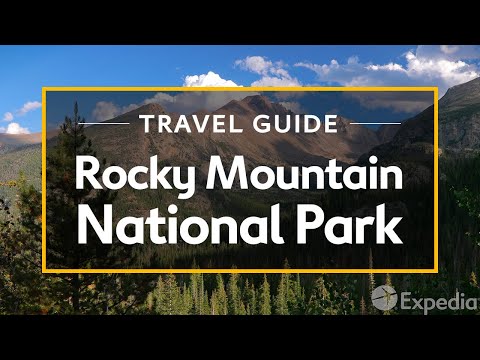
Nestled in the heart of the Colorado Rockies, Rocky Mountain National Park offers an unforgettable adventure with its awe-inspiring natural beauty and abundant wildlife. Covering approximately 415 square miles, this majestic park lures millions of visitors each year who come to soak in its pristine landscapes and rugged charm. From towering peaks and serene lakes to verdant forests and wildflower-dotted meadows, it is a haven for nature lovers, hikers, photographers, and anyone seeking a respite from the bustle of modern life.
#### When to Visit
Rocky Mountain National Park is open year-round, though the experiences it offers change dramatically with the seasons. Summer (June through August) is peak season, offering warm temperatures and accessible trails. It’s ideal for hiking, wildlife viewing, and camping. Fall (September through October) brings cooler weather and spectacular autumn foliage – perfect for photographers and those looking to enjoy the elk rutting season. Winter (November through April) transforms the park into a snowy wonderland suitable for snowshoeing, cross-country skiing, and sledding. Spring (April through May) can be unpredictable with lingering snow and muddy trails but offers solitude and the beauty of blossoming flora.
#### Getting There
The park has several entrances, but the most popular are Estes Park to the east and Grand Lake to the west. Denver International Airport is about two hours away from Estes Park by car. From Denver or Boulder, take US-36 directly into Estes Park or State Highway 7 for a more scenic route entering via Lily Lake.
#### Things to Do
**Hiking:** With over 300 miles of hiking trails ranging from flat lakeside strolls to challenging mountain summits like Longs Peak at 14,259 feet high. Popular hikes include Emerald Lake Trail — an easy trek offering views of alpine lakes — or the more demanding Sky Pond via Glacier Gorge Trail.
**Scenic Drives:** For those who prefer to take in their surroundings from behind a wheel or need a break between hikes, Trail Ridge Road provides breathtaking panoramic views as it winds above treeline to heights over 12,000 feet before descending into Grand Lake.
**Wildlife Watching:** The park is teeming with wildlife such as elk herds that roam freely in Moraine Park; bighorn sheep are often spotted on rocky outcroppings; and moose frequenting wetlands on the west side of the park.
**Photography:** Every turn offers photogenic vistas perfect for capturing Colorado’s rugged peaks against vast skies or reflective waters framing dawn or dusk’s golden light.
**Guided Tours:** Ranger-led programs provide deeper insights into natural history while night sky programs highlight celestial sights in crystal-clear mountain air.
#### Where to Stay
Accommodations range from rustic campgrounds within the park boundaries providing direct access to nature — ideal for those who want to sleep under stars — to comfortable lodgings in nearby towns like Estes Park where quaint shops and local eateries enhance your stay.
#### Tips for Your Visit
– **Book Early:** Especially during summer months when campgrounds fill quickly.
– **Park Pass:** Purchase a pass online prior to your visit as entrance fees apply.
– **Altitude Sickness:** With elevations high throughout much of Rocky Mountain National Park, it’s essential acclimatize appropriately.
– **Weather Awareness:** Mountain weather can change swiftly; layer clothing even in summer.
– **Leave No Trace:** Help preserve this pristine wilderness for future generations by adhering strictly to Leave No Trace principles.
### Conclusion
Rocky Mountain National Park serves as both a peaceful retreat and thrilling adventure landscape offering boundless natural beauty at every turn. Whether exploring its heights by foot on winding trails or enjoying its scenic vistas by car along Trail Ridge Road gives every type of traveler something unforgettable. Experience this jewel nestled high in America’s Rockies where land sky converge creating moments etched forever into memory.
